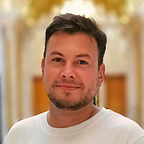The Hidden Power of the DAO: Network Effects
As per the terms of the plain english Proposal we’ll soon submit for public review, both the hardware designs and software built by Slock.it UG will be released under the free, open source MIT license. The DAO, if it votes to back our Proposal, will be supporting the deployment of a decentralized sharing infrastructure free of any tie to any particular hardware or software manufacturer.
Yet, Slock.it UG as well as any competing third parties (read: Ethereum Computer clones) will have an incentive to register their products with the DAO’s network. How so? The products would altogether lose their value proposition when ‘disconnected’ from the DAO.
In order to be discovered and rented via the DAO’s mobile app — the one with the power of thousands of evangelists vested in its success — these products will need to meet some specific conditions, defined as part of immutable smart contracts.
Only the DAO can change these conditions, of them being that the product has to pay the DAO a percentage of each profitable transaction.
Therefore, in order to be easily discovered, it’s in the interest of anyone who intends to build a version of the Ethereum Computer (not just Slock.it UG) to connect it to the DAO’s smart contracts. Of course, this will stay true for all future iterations on blockchain-enabled smart objects which could be submitted as part of upcoming Proposals.
It’s very clever — but I cannot take credit for this idea — as it’s Christoph Jentzsch, the author of the DAO Whitepaper, who came up with the concept of a virtuous cycle of value driven by network effects.
In fact, should someone produce a smart lock and forgo the so-called “DAO %”, they would lose all the advantages of decentralization, namely:
- Access to micro-transactions (e.g. being able to pay a couple of cents to rent an appliance for 10 minutes or less).
- Trusted key management leveraging the native public/private key infrastructure of the blockchain, without third parties involved.
- Transparency (being able to prove that someone has the permission to open any given lock, again without central tracking).
- Efficiency: both end users and the DAO itself won’t have a need to run centralized servers or make use of costly cloud services.
- Stability, as the locks function with or without Slock.it UG involved. Locks suffer no downtime and are free of dependency (‘vendor locking’) from any third parties.
- Access to an open API for smart contracts. The blockchain and the sharing framework of the Ethereum Computer act as an infinitely extensible open API where any developer can contribute services that add value (currency conversion, insurance, etc).
While most of the above could of course be done in a centralized way without the blockchain, it is much easier, faster, and cheaper to leverage the powerful network effects brought on by the DAO itself.
The DAO’s competitive advantage stems from the synergies of the projects it backed and its technologically agnostic network of partners, all aligned around shared, mutual incentives.
Thanks to x_ethereal_x on our Slack for his frequent and insightful comments that helped inspire this blog post.
About the Author
Stephan Tual is the Founder and COO of Slock.it.
Previously CCO for the Ethereum project, Stephan has three startups under his belt and brings 20 years of enterprise IT experience to the Slock.it project. Before discovering the Blockchain, Stephan held CTO positions at leading data analytics companies in London with clients including VISA Europe and BP.
His current focus is on the intersection of blockchain technology and embedded hardware, where autonomous agents can transact as part of an optimal “Economy of Things”.
Twitter: @stephantual
Contact: stephan@slock.it
If you enjoyed reading this, please log in and click “Recommend” below.
This will help to share the story with others.
